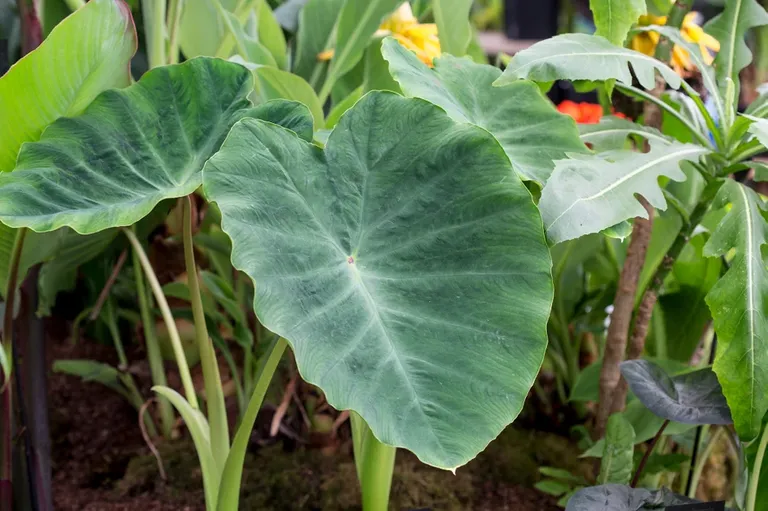Within the biological-vegetative characteristics of the species Colocasia esculenta, the leaves are usually peltate. These are generated in the apical meristem of the corm and appear rolled at the base forming a pseudostem. The new leaves are rolled out from between the petioles of the already formed leaves and the older lateral leaves wither and dry up.



▶ In the first six months the leaf area increases rapidly and then remains stable as the weight of the subway organs increases. The petiole is cylindrical at the base and grooved at the top, showing a coloration that varies according to the clone. A distinctive feature is the presence of yellow or pink longitudinal lines and reddish to purplish spots or dots towards the base.

▶ Credits: gardensonline. – [Image of Public Domain]
≕ I invite you to stay tuned and read my next contribution ≔
The petiole is inserted in the middle part of the leaf blade from which it goes directly to the three main nerves; the angle formed by the petiole with the lamina is a varietal characteristic. In some clones the insertion of the petiole determines that the lamina takes an upright position and in others an inclined one. The length: width ratio varies with the clone. From the insertion of the petiole starts the central nerve, which ends at the apex of the leaf and two basal nerves. Color varies from light-green and purple-green.
Another biological-vegetative characteristic of the species Colocasia esculenta is the corm, which is the organ of the plant that has agronomic interest, this is found in the root that botanically is called corm or stem, this subway stem develops rapidly, taking a cylindrical shape.
From the central corm, lateral cormels covered with fibrous scales develop, in the central part is where a great amount of nutritious substances are stored, such as carbohydrates, that is why it is considered as a reserve organ, also for plant propagation.

In terms of reproduction, Colocasia esculenta has two or more inflorescences, which sprout together from the apical meristem of the corm, between the petioles. These develop from an enveloping leaf, called spathe, which surrounds the spadix (these are characteristic structures of the Araceae).
NOTE: Reference material.
HTTP is in use instead of HTTPS and no protocol redirection is in place. Be careful and do not enter sensitive information in this website as your data won't be encrypted.
It's also a good habit to always HOVER LINKS to see the preview in the bottom-left corner of your browser.
@cryptoshots.nft 🔫
P2E 3D game @ Hive
Oh I didn't know this, I will keep it in mind. I think this is the paper I used in my theoretical source. Thanks